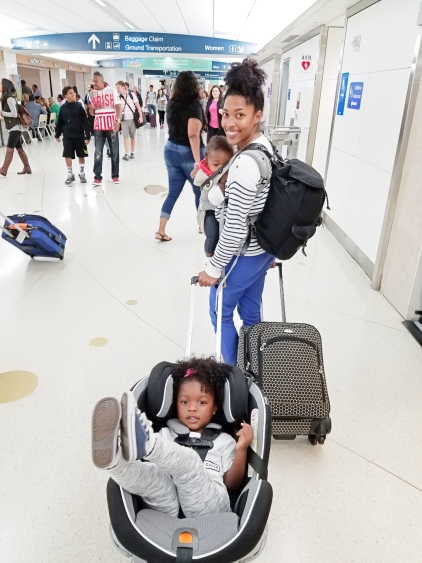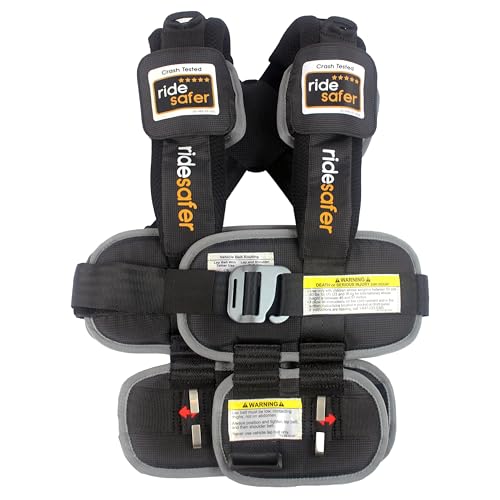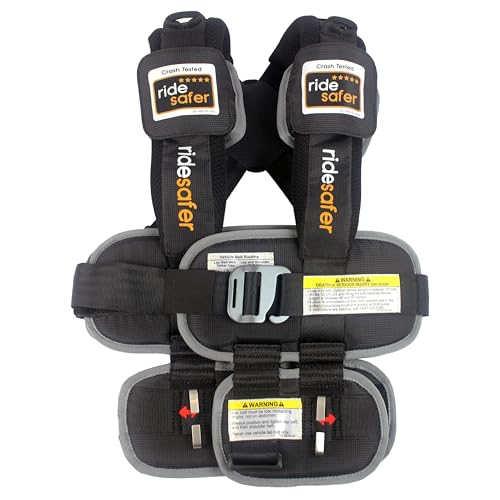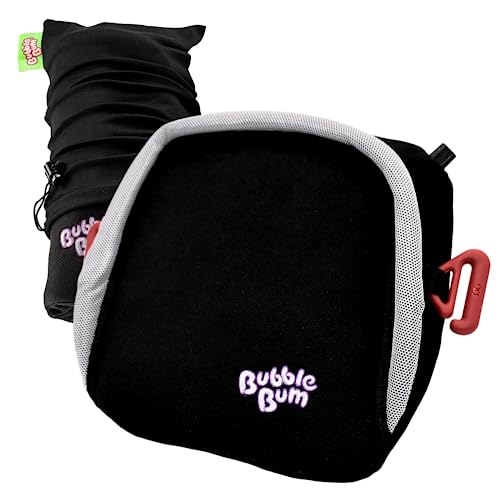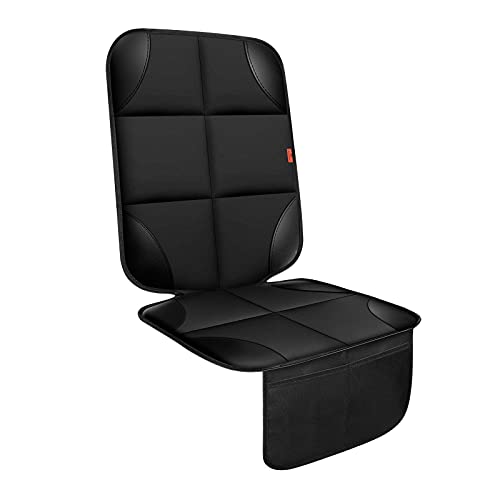You’re getting ready for a trip with your little one, and you know that safety is a top priority. Traveling with a car seat might seem like a challenge, but it doesn’t have to be.
Imagine the peace of mind you’ll have, knowing your child is safe and secure during your journey. In this guide, we’ll uncover simple tips and tricks to make traveling with a car seat a breeze. Whether you’re hopping on a plane, taking a road trip, or catching a cab, these strategies will ease your worries and keep your focus on making family memories.
Curious about how to make your travel experience smoother and stress-free? Read on to discover everything you need to know about traveling with a car seat, ensuring your child’s safety and your peace of mind.
Choosing The Right Car Seat
Traveling with a car seat can be simple and safe with the right choice. Ensure it fits securely in your vehicle. Always check that it’s suitable for your child’s age and size.
Choosing the right car seat can feel overwhelming, especially with so many options available. A car seat isn’t just a purchase; it’s an investment in your child’s safety. Selecting the right one ensures peace of mind and a comfortable journey for your little one.Types Of Car Seats
Car seats come in three primary types: infant seats, convertible seats, and booster seats. Infant seats are designed for newborns and small babies, usually up to 35 pounds. Convertible seats grow with your child, transforming from rear-facing to forward-facing, making them a versatile choice. Booster seats are for older children who have outgrown their convertible seats but aren’t quite ready for a seatbelt alone. Understanding these types helps you decide which fits your current needs. Consider how long you plan to use the seat. A convertible seat might save you money in the long run if you have a growing toddler.Age And Weight Considerations
Your child’s age and weight significantly influence the car seat you choose. An infant seat is ideal for a newborn, but once they exceed its weight limit, transitioning to a convertible seat is crucial. For example, my toddler hit the weight limit of his infant seat sooner than expected. We switched to a convertible seat that supports a higher weight, ensuring his comfort and safety. Are you prepared for such growth spurts?Certification And Safety Standards
Safety certifications provide assurance that the car seat meets strict standards. Always check for labels indicating compliance with safety regulations. In the U.S., look for the Federal Motor Vehicle Safety Standard (FMVSS) label. A friend of mine once purchased a car seat from a foreign brand, only to find it didn’t meet local safety standards. This mistake cost more than a return trip—it was a lesson in prioritizing safety over price. Are you double-checking for these crucial certifications before buying? Choosing the right car seat is more than just a decision; it’s a commitment to safety. Equip yourself with the right knowledge and make an informed choice. Your child’s safety on the road depends on it.
Installation Tips
Traveling with a car seat can be a daunting task, especially when you’re trying to ensure the utmost safety for your little one. The installation process is crucial and can make all the difference between a secure journey and a worrisome one. Getting it right might seem like a challenge, but with a few tips, you can master it effortlessly. Let’s break down some essential installation tips to keep your child safe and sound while on the road.
Securing The Car Seat
Properly securing the car seat is the first step in ensuring safety. Before you even start, read the car seat manual thoroughly. Each seat has unique instructions that can make a world of difference.
Make sure the car seat doesn’t move more than an inch side-to-side or front-to-back once installed. If it does, it’s not tight enough. Have you ever had a moment of doubt thinking, “Is my child really safe?” Triple-checking the seat’s security will help you avoid those worries.
Checking Compatibility With Your Vehicle
Your car seat needs to fit well with your vehicle. Check your car’s manual to see if it mentions anything about car seat compatibility. It’s surprising how many people overlook this step.
Are you aware that some cars have specific requirements or recommendations for car seat placement? Knowing these can save you from last-minute surprises. Make sure your car’s seat is at the right angle for installation; otherwise, your seat may not be as effective.
Using Seat Belts And Latch Systems
Seat belts and LATCH systems are two primary methods for securing a car seat. Each has its own advantages, so knowing how to use both is beneficial. Seat belts are universal, but the LATCH system is designed specifically for car seats.
Have you ever wondered which one is better? The truth is, both are equally safe when used correctly. The key is to ensure they’re tightly fastened. Take a moment to understand the LATCH anchors in your car; they’re usually hidden but crucial.
Don’t hesitate to reach out to a certified technician if you’re unsure about the installation. Seeking expert help can be a lifesaver. Remember, your child’s safety is worth every bit of effort.
Traveling By Air
Traveling by air with a car seat can be challenging. Many parents worry about safety and convenience. Knowing the rules and tips can ease stress. Understanding airline policies, FAA regulations, and how to carry car seats is crucial. This guide will help you travel smoothly with your child’s car seat.
Airline Policies On Car Seats
Every airline has different rules for car seats. Some allow car seats for free, others charge fees. Always check your airline’s policy before booking. Many airlines prefer FAA-approved car seats. It ensures safety during flights. Ask your airline about size restrictions. This helps avoid surprises at the airport.
Faa Regulations
The Federal Aviation Administration sets rules for car seats on planes. Car seats must be FAA-approved for air travel. Check the label on your car seat for approval. The seat should fit in the airplane seat. It must not block other passengers or exits. Always use the car seat’s harness for safety.
Tips For Carrying Car Seats Through Airports
Carrying a car seat through the airport can be tiring. Use a car seat travel bag for easy transport. It protects the seat from damage. Consider a wheeled car seat carrier. It makes moving through airports easier. Some parents use backpacks designed for car seats. This frees up hands for luggage and kids.
Arrive early for extra time. Security checks can take longer with car seats. Be patient and prepared. Keep all car seat documents handy. Airport staff might ask for them during checks.
Traveling By Train Or Bus
Traveling with a car seat on public transport can feel challenging. But with a little planning, it’s manageable. Trains and buses offer different advantages and limitations. Understanding these can make your journey smoother and safer. Let’s explore important points for a hassle-free experience.
Space And Compatibility Considerations
Before your trip, check the space available on trains or buses. Some services offer more space than others. Knowing this helps in choosing the right seat. Not all car seats fit well on public transport. Measure your car seat’s dimensions. Compare them with the available space on the train or bus. This ensures a good fit. Compact and lightweight car seats are easier to manage. They provide more flexibility in tight spaces.
Safety Measures On Public Transport
Safety is a top priority when traveling with children. Always secure the car seat properly in its spot. Some buses and trains have seat belts. Use them to fasten the car seat. If there are no seat belts, find a stable spot for the car seat. Keep the child buckled in the car seat at all times. This minimizes the risk of accidents or sudden movements. Teach older children to remain seated while the vehicle is moving. Ensure you have easy access to the car seat in case of emergencies.
Car Seat Safety On Road Trips
Traveling with a car seat ensures your child’s safety during road trips. Secure the seat properly and check all straps. Make sure it fits the vehicle snugly and comfortably.
Traveling with your little ones can be an adventure filled with laughter, bonding, and, yes, a few challenges. One of the most important considerations when hitting the road is ensuring your child’s car seat is both comfortable and safe. As a parent, your peace of mind is invaluable, and focusing on car seat safety during road trips is crucial. But how do you balance comfort with security? Let’s dive into some practical tips to ensure your journey is both safe and enjoyable.Ensuring Comfort And Safety
Comfort and safety don’t have to be at odds. Before your journey, check the car seat’s angle and make sure it’s suitable for your child’s age and size. A friend once shared how a wrongly adjusted headrest caused endless complaints from her toddler, turning a fun trip into a stressful one. It’s the little adjustments that count. Consider the climate. Is your child too hot or cold? Adjust the car’s temperature or dress them in layers. You wouldn’t want to be bundled up like a snowman in a warm car, so why should they?Packing Car Seat Accessories
Accessories can make a world of difference on a long drive. Think about a neck pillow or a cozy blanket to make napping more restful. Small toys or books attached to the seat can keep little hands busy and minds entertained. A cup holder can prevent spills and keep drinks within reach. Remember to pack a sunshade to block harsh sunlight. How often have you driven with the sun glaring in your eyes, wishing for a visor? Your child feels the same way.Emergency Preparedness
Being prepared for emergencies is just as important as comfort. Keep a first aid kit and a list of emergency contacts within arm’s reach. What if your child gets a scrape or a sudden fever? Having supplies ready can save you from unnecessary stress. Ensure your phone is charged and have a portable charger handy. A dead phone in the middle of nowhere is not an adventure anyone wants. Think about keeping a spare car seat cover or cleaning wipes in the car. Spills happen, and a quick cleanup can keep the trip moving smoothly. By focusing on these aspects, you can create a road trip experience that’s both safe and memorable for you and your child. What’s your go-to tip for traveling with a car seat?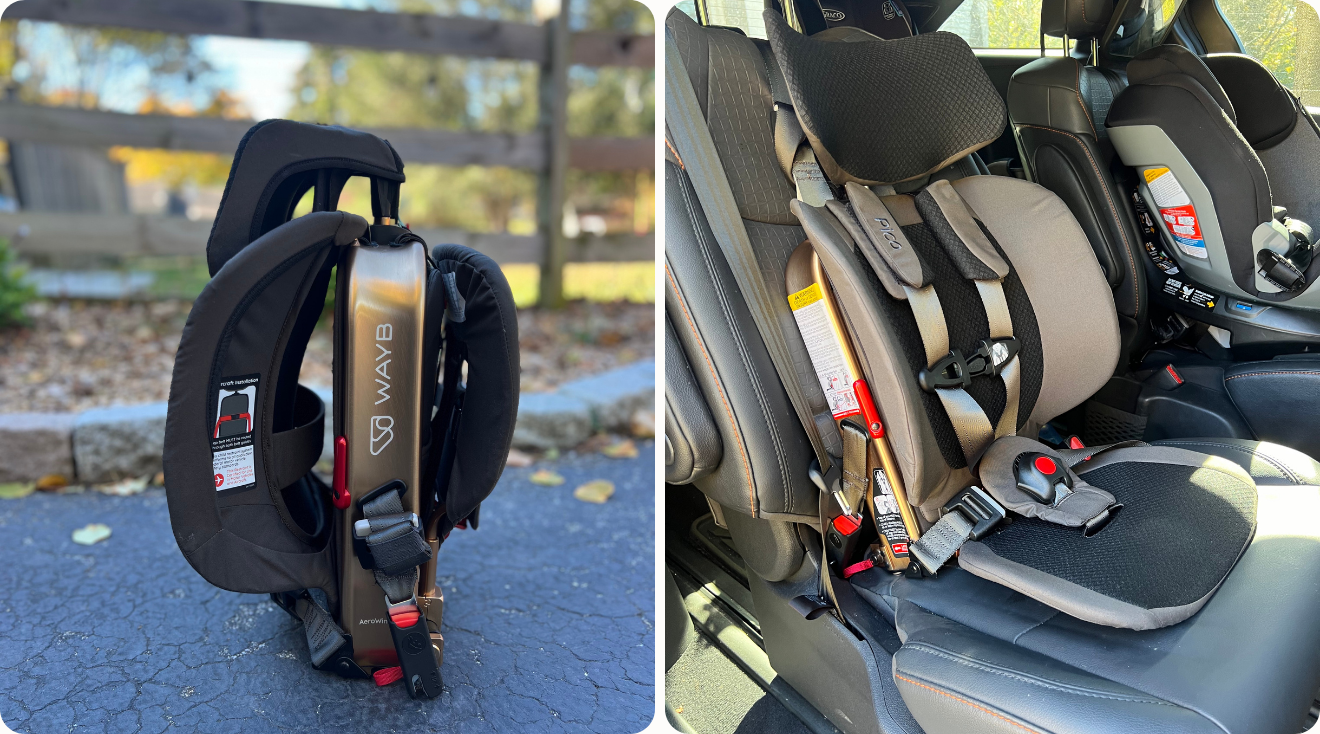
Maintaining Car Seat Safety
Traveling with a car seat ensures your child’s safety. Install it securely and follow manufacturer guidelines. Always check the seat’s position before every trip for maximum protection.
Maintaining car seat safety is crucial when traveling with children. Proper care ensures your child’s safety during every journey. Regular checks and maintenance prevent unexpected issues. Focus on the following key aspects to keep your car seat in top condition.Regular Inspections
Inspect car seats regularly to ensure safety. Check for loose straps and worn-out parts. Tighten straps and replace damaged components. Look for recalls to address any manufacturer defects. Regular inspections help catch potential problems early.Cleaning And Care
Clean car seats to maintain hygiene and safety. Use mild soap and water to clean fabric. Avoid harsh chemicals that may weaken materials. Vacuum to remove crumbs and debris. Dry thoroughly to prevent mold growth. Clean seats regularly to ensure comfort and safety.Replacing Car Seats
Replace car seats as they age or get damaged. Check expiration dates marked on the seat. Replace seats after major accidents. Use seats that meet current safety standards. An outdated seat may not provide adequate protection. Keep up with advancements in car seat technology for optimal safety.Common Mistakes To Avoid
Traveling with a car seat is essential for your child’s safety. Many parents make common mistakes that can compromise this safety. Being aware of these mistakes can help avoid them and ensure a secure journey.
Incorrect Installation
Incorrect installation is a frequent error. Many parents rush the process, leading to improper setup. The car seat needs to be tightly secured. Loose seats can slide or tip. Double-check the seat’s angle. Ensure straps are not twisted. Always refer to the installation manual. It provides step-by-step instructions. Following them ensures a correct fit.
Using Expired Car Seats
Car seats have expiration dates. Using expired seats is risky. Materials can degrade over time. This affects their strength and safety. Check the expiration date on the seat. It’s usually on a sticker. Replace the seat if expired. An up-to-date seat offers better protection. Never compromise on this aspect.
Ignoring Manufacturer Guidelines
Manufacturer guidelines are crucial for safety. Each car seat has specific instructions. Ignoring them can lead to unsafe conditions. Adjust the seat according to your child’s weight and height. Use the correct harness slots. Ensure the seat matches your car’s specifications. These guidelines are designed for optimal security. Always prioritize following them.
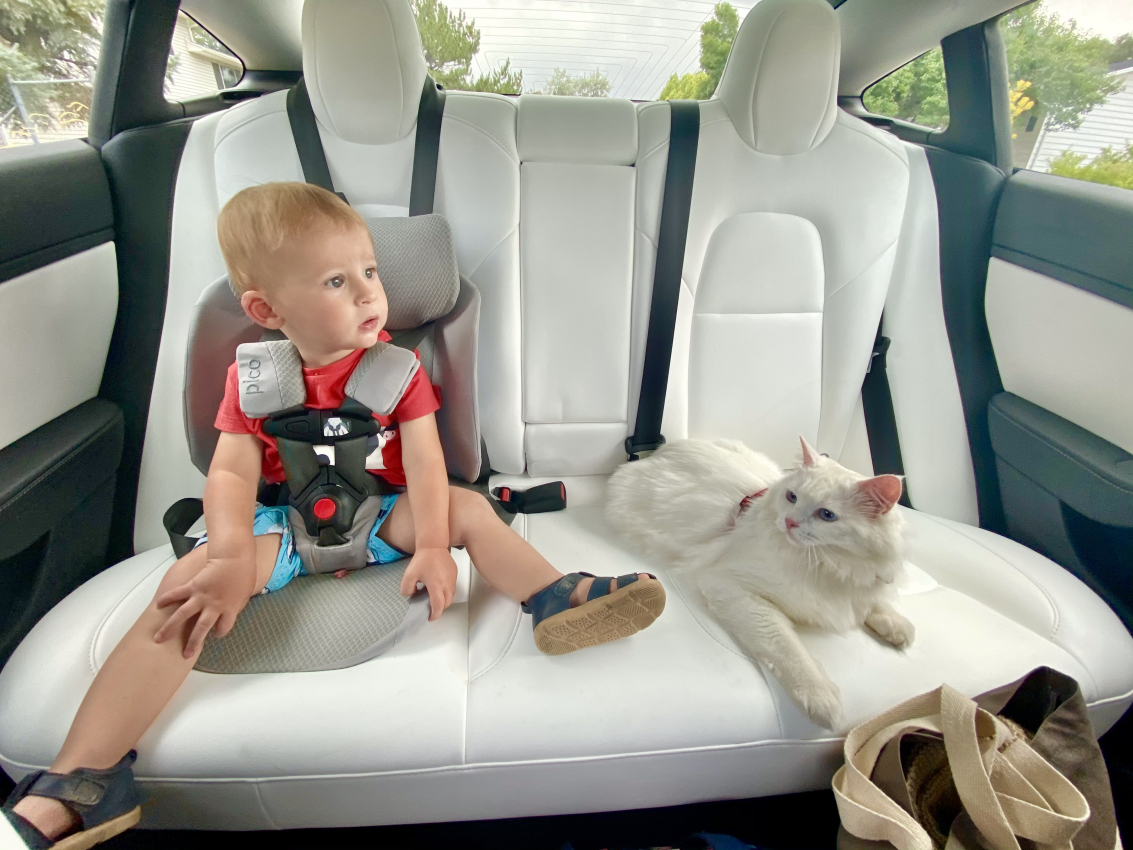
Frequently Asked Questions
What Is The Best Way To Transport A Car Seat On A Plane?
Use a padded travel bag to protect the car seat. Gate-check it for better handling and quick access. Secure it with a luggage strap if necessary. Verify airline policies on car seats before traveling.
Is It Better To Gate Check Or Check A Car Seat?
Gate checking a car seat minimizes damage and ensures availability upon arrival. Airlines often allow this for free.
How To Go Through Tsa With A Car Seat?
Carry the car seat as an extra item. Remove bulky parts for easier screening. Use a stroller or cart if needed. Inform TSA agents about the car seat for faster processing. Ensure the car seat is clean and free of prohibited items.
Is It Free To Take A Carseat On A Plane?
Yes, most airlines allow car seats on planes for free. Check your airline’s policy for details and restrictions. Ensure the car seat is FAA-approved for use on aircraft. Traveling with a car seat can enhance your child’s safety during the flight.
Conclusion
Traveling with a car seat can be simple and stress-free. Always plan your journey ahead. Choose the right car seat for your needs. Check airline policies if flying. Use protective covers to avoid damage. Practice installing the car seat before your trip.
This ensures safety and saves time. Consider renting a car seat at your destination. But ensure its safety standards. Traveling with kids requires patience. Yet, with the right preparation, it becomes manageable. Enjoy your trip, knowing your child travels safely.
Keep these tips handy for a smooth experience every time. Safe travels!

